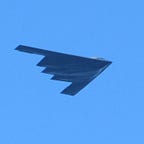7% of Cars Sold by Tata in India Are All-Electric
The Tata Nexon EV crossover was selling remarkably well in H1 2022.
In India, the market share of all-electrics (BEVs) among passenger vehicles is low. In the first half of the year, it was roughly 1%.
But the overwhelming majority of those sales are scored by just one brand: Tata. Basically, the Indian BEV market is even more Tata-centric than the American BEV market is Tesla-centric.
The name does not ring any bells? Well, Tata Motors happens to own 100% of Jaguar Land Rover (acquired in 2008), but the Tata brand itself was never popular in Europe — despite some forays into the European market; and in North America, it is practically unknown. In its home country, it’s different: Tata is a major, and long-established, player in the Indian passenger vehicle market.
And in the first half of 2022, about 7% of passenger vehicles sold by Tata in India were all-electric.
It’s just two all-electric models: the Tata Nexon EV crossover SUV (30.2 kWh or 40.5 kWh) and the Tata Tigor EV small sedan (26 kWh).
In the first half of the year, 13,280 units of the Nexon EV were sold — and 5,532 units of the Tigor EV (For comparison, in the first half of the previous year, these figures were merely 3,204 and 222, respectively). That sums up to 18,812 units, although Tata’s own monthly reports show 18,378.
The Nexon EV is the more interesting of the two models. It is still a small vehicle, about 4 m (157 inch) long. Front-wheel drive only, like most subcompact crossovers. The variant with a 40.5-kWh battery, designated “Max”, packs 143 hp, accelerates from 0 to 100 km/h (0–62 mph) in under 10 seconds, and has a top speed of 140 km/h or 87 mph.
That variant costs the equivalent of US$22,300.
The Nexon — the gasoline variant, not the electric one — scored 5 stars out of 5 in a Global NCAP crash test, a first for an Indian vehicle (as of 2022, it is no longer the only one with such a rating). But make no mistake, it still has only 2 airbags. And Global NCAP crash tests are much more lenient than the current Euro NCAP test procedure.
At the end of September, Tata unveiled a third model, the Tiago EV. The Tiago is a hatchback counterpart to the Tigor sedan. The EV variant is a vehicle with a 19.2-kWh battery selling for the equivalent of $10,350 (or a vehicle with a 24-kWh battery selling for $12,150). It is marketed as the most affordable EV in India.
And Tata’s competitor Mahindra is preparing an offensive of all-electric SUVs. The first one is the XUV400, with a roughly 40-kWh battery.
Where are Tesla and BYD?
Well, they are abroad — in the sense that they don’t make all-electric vehicles in India. And the Indian car market is prety tightly insulated from foreign imports. There are high import tariffs — 60% or 100%, depending on the value of the car.
Tesla is simply absent from the Indian market (although there are private imports), and BYD sells very small numbers of all-electric passenger vehicles each month.
Electric motorcycles are booming in India
Here’s a little fact about the Indian car market: every year, Indians buy about 10–20 times less cars and light trucks per capita than Americans, Germans or the French. It might have something to do with how India is not as rich as these countries.
This is partially (but only partially) compensated by huge sales of motorcycles and scooters. Here are the statistics for a certain period of 12 months (these are not statistics for the first half of the year):
- passenger vehicles: ~ 3 million
- commercial vehicles: ~ 0.7 million
- three-wheelers: ~ 0.3 million
- two-wheeled vehicles: ~ 13 million
Yes, 13 million motorcycles and scooters per year — compared to 3 million passenger vehicles.
And the sector of motorcycles and scooters is undergoing electrification: the market share of all-electric vehicles varied from 2.8% to 4.5% over the first six months of 2022 (excluding low-speed vehicles — so electric kick scooters are not inflating these statistics).
Some 400,000 “high-speed” electric motorcycles and scooters were sold in H1 2022, compared to some 20,000 electric passenger vehicles. You can see which type of vehicle is more popular.
Among three-wheelers (which are not included in the statistics for motorcycles and scooters), the share of all-electrics in H1 2022 was roughly 50%. Yes, about half of them. Although it’s half of a surprisingly small market — three-wheelers, though they are a common sight on roads, are not currently selling in India as well as you might think. As a result, two-wheeled electric motorcycles and scooters are actually outselling electric three wheelers.
___
Article originally published on brunelist.com.
